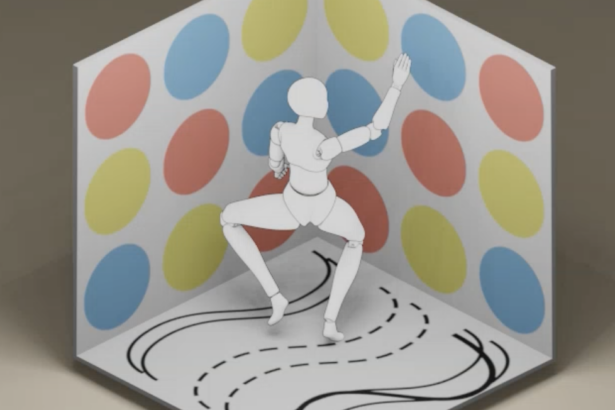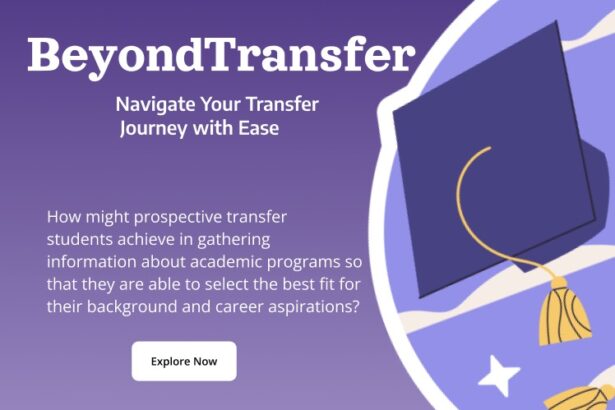About This Project
“Who Decides?” is a graphic novel for adolescents that provides learners with information about digital privacy and predictive algorithms so that they may consider their relationship to technology more thoughtfully. Using a culturally relevant approach, “Who Decides?” meets students where they are, and incorporates a realistic understanding of how they interact with the internet and social media in everyday life. “Who Decides?” frames digital well-being not from a place of fear, but positions students with agency to make their own decisions about the internet.
Intentions
I taught sixth grade science for four years — before, during, and after the COVID-19 pandemic and the onset of remote learning. In that time, I became deeply familiar with the ways that students use the internet, and how they envision their own relationship to social media. Much like the students in front of me, my parents, teachers, and other trusted adults did not have experience or understanding of the social media landscape, and couldn’t grasp the ways that these intangible worlds have profound impacts on our everyday lives. When it came to conversations about digital worlds and well-being, I was comfortable and confident leading my students. After all, I’d been through much of it myself.
As I’ve learned more about the ways our personal information is commodified by algorithms and other digital media, I have been thinking about the ways my students — and other young people — consider privacy and the things they share online. By the time they have developed a more robust framework for their relationship to the internet, it may be too late. Beyond disclosing addresses, names, or other contact information, I believe young people need to know the ways their identities are monitored and tracked when they use apps, websites, and learning tools on a daily basis.
My goal is to provide students with an understanding about how their personal information is gathered and used on the internet. My goal is not to provide them with my perspective or a prescribed way to think about today’s era of surveillance capitalism; rather, I hope that by the end of reading “Who Decides?” they might begin considering answers to ethical and social dilemmas surrounding the use of predictive algorithms, personalization, advertising, bias, and the future of sophisticated artificial intelligence. I have worked to deliver the content found in “Who Decides?” in a way that centers learners’ own sense-making and the evaluation of ethical questions.
Background
This project started off as an experiment in curriculum design. I initially set out to create a digital media and privacy curriculum that incorporated elements of core academic subjects for middle school students. While writing the curriculum and identifying key learning objectives, I was excited about every idea that came to mind. At some point it was hard to focus on a central theme. I didn’t know how to start small when the idea was so big!
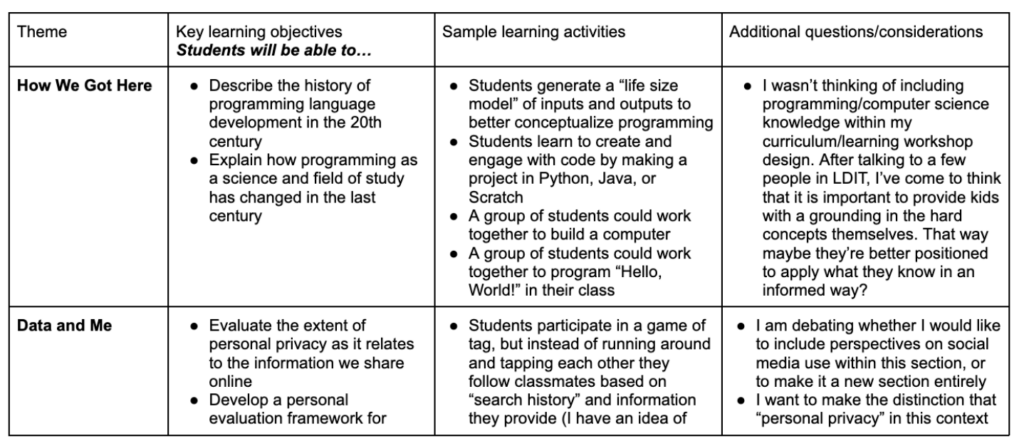
I set out with an ambitious set of objectives and learning activities, drawing on my HGSE coursework and personal interests.
Things were going well and I knew I had a lot of ground to cover — but I had a great deal of energy and a lot to think about! And, a priority throughout the project was that my final product would reach students authentically — not in an overly-animated, out-of-touch tone, and with legitimate questions and ideas for them to consider about their world.
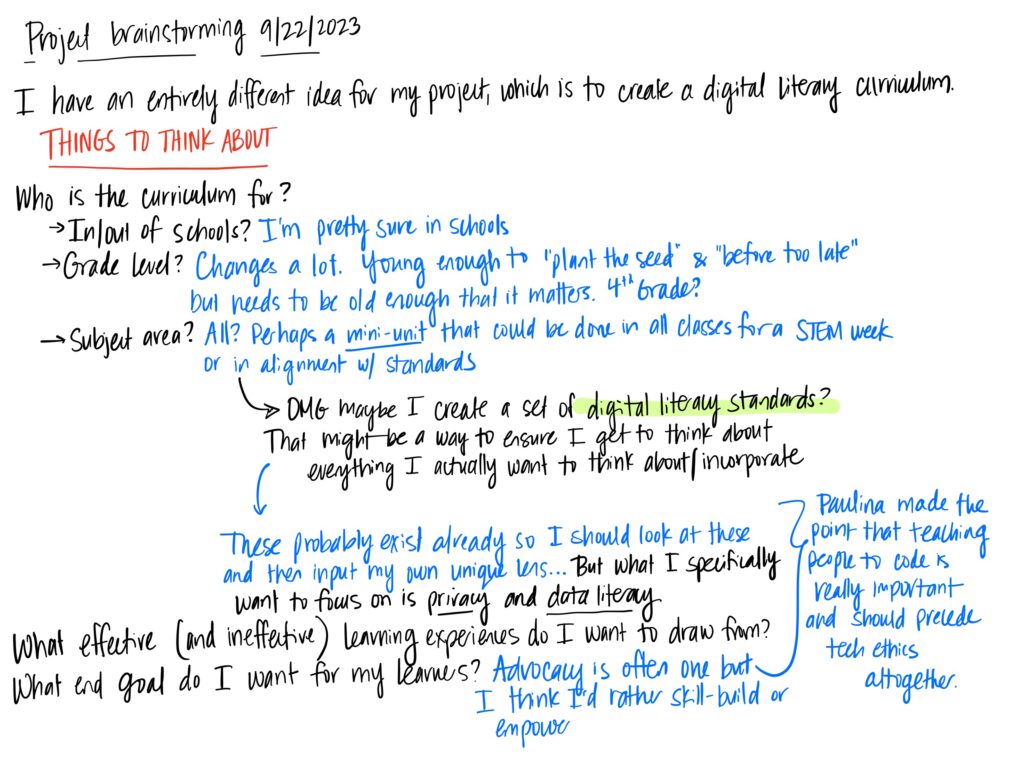
During one brainstorming session, when I went through existing curricular offerings from larger tech companies, I thought about my own learning experiences, and effective ways to reach students without sending a single message into their brains. I remembered a graphic novel that my students couldn’t keep their hands off of, that positioned them as independent thinkers who could evaluate the sensitive details of a larger social quandary: Yummy: The Last Days of a Southside Shorty, by Greg Neri.
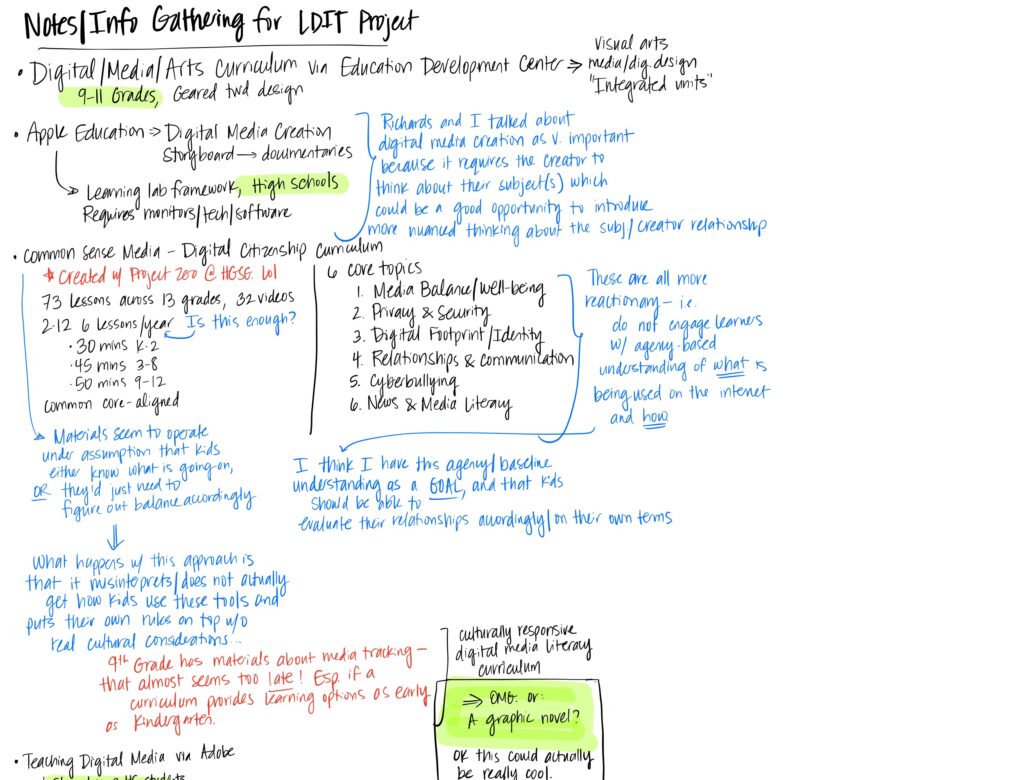
Yummy tells the true story of Robert “Yummy” Sandifer, who sought community and belonging in his neighborhood gang. Neri’s voice throughout is honest, authentic, and accessible to learners, while conveying a story with a great deal of emotional impact. This book was important for my students and for me, and set a gold standard for the type of project I wanted to create. Specifically, in the way that I wanted to position and empower learners to think.
With that, “Who Decides?” was born! I set out to create a set of objectives, a storyboard, and began sketching out the world I wanted to build. I had never written a graphic novel before — and I haven’t written a non-academic paper for an audience in years — so I was eager to embark on an entirely new creation and to learn something along the way!
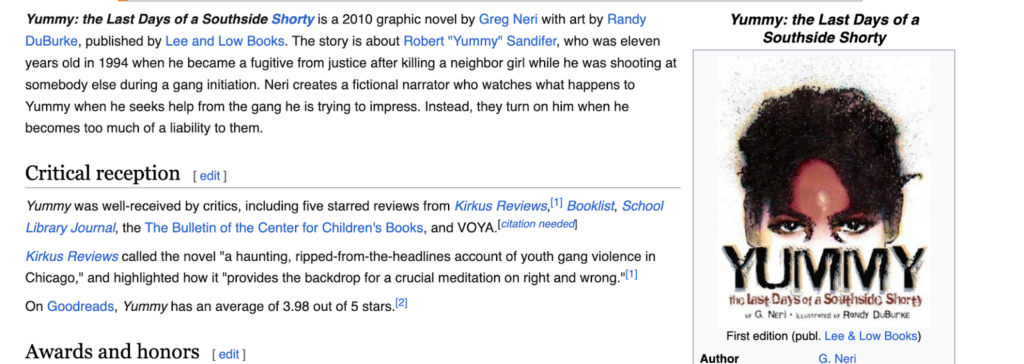
Where Is She Now?
At this point, I have a storyboard and a set of initial drawings for a graphic novel about the ubiquity and prevalence of digital surveillance. The novel introduces questions and draws on recognizable everyday situations, while framing each as a near-dystopian scenario. Hopefully, this encourages learners to think about the type of world they’d like to be part of, and where they draw a line when it comes to their own information. I have researched and read many graphic novels throughout this project, as well as guides to creating zines and creative digital media. I would hope to expand this learning sequence to include more details about the nuances of our digital world, and find myself excited about the possibilities of so many different ventures. I am proud of my prototyping process thus far and the ways that I have stuck with my vision, and wonder how I might continue to create throughout the year — I am already motivated to take on new projects, to keep “making,” and learning as I go.
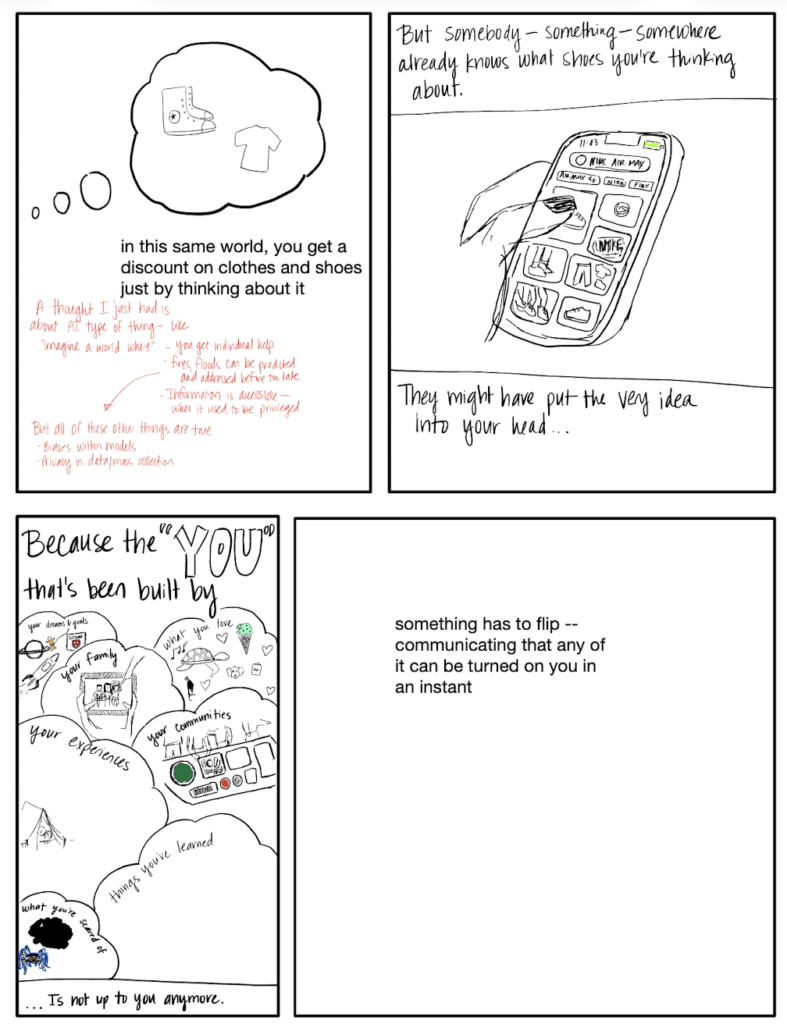

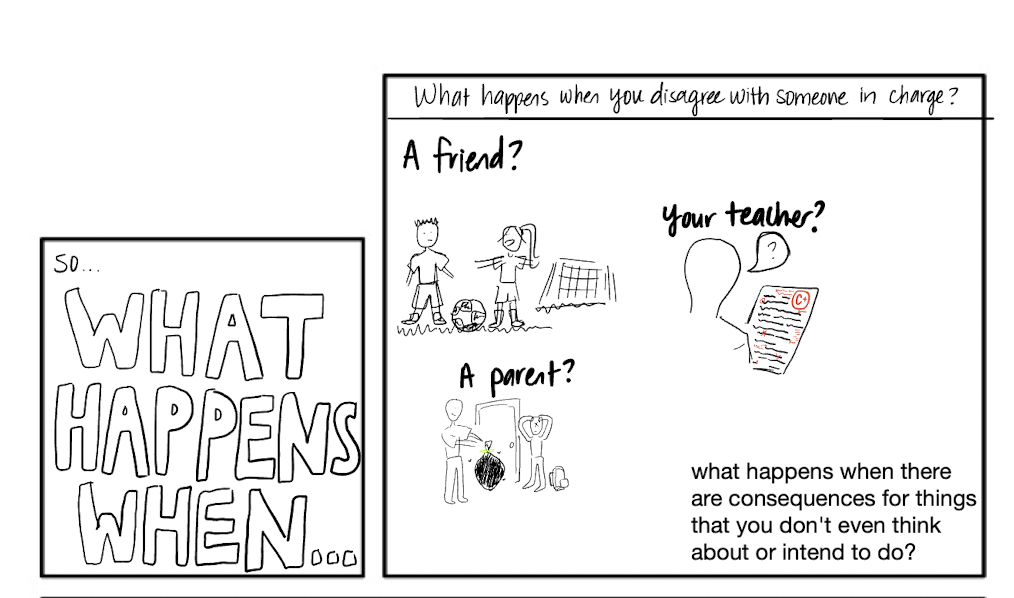
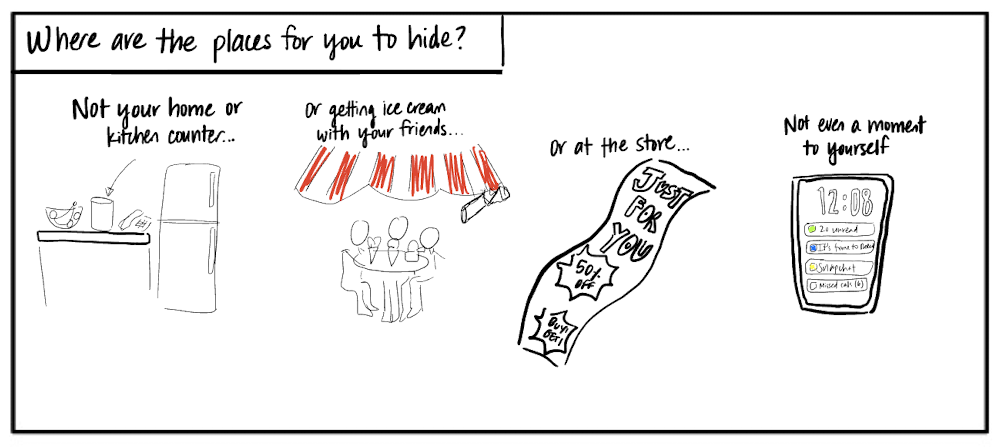
WILD Implications
This project brought me closer to understanding the role of a learning designer and what it means to create a meaningful learning experience for others. I don’t have one single definition of learning design that I can tie up with a shiny bow — rather, I feel I’m holding a field guide to a new way of thinking that provides insight to different organisms, environments, and the best ways to make sense of what’s around. This process was certainly not linear, and I’ve come out of it with something entirely different from what I could have anticipated months ago. I learned that inspiration can come from anywhere, and realized the ways that a small idea can serve as a nucleus for a larger experience. I look forward to seeing where this project continues in the future, and am grateful for the guidance and support I received from my LDIT cohort, TF, and teaching team along the way.


